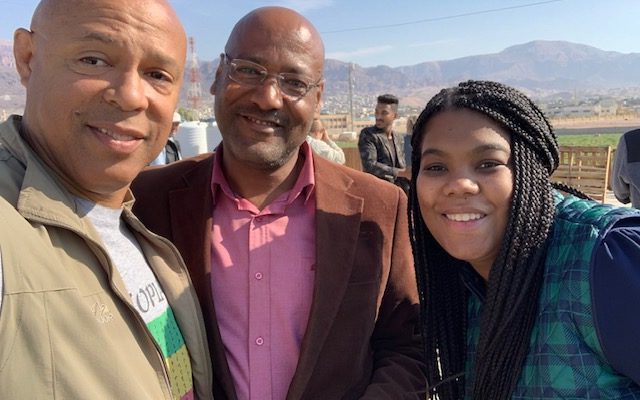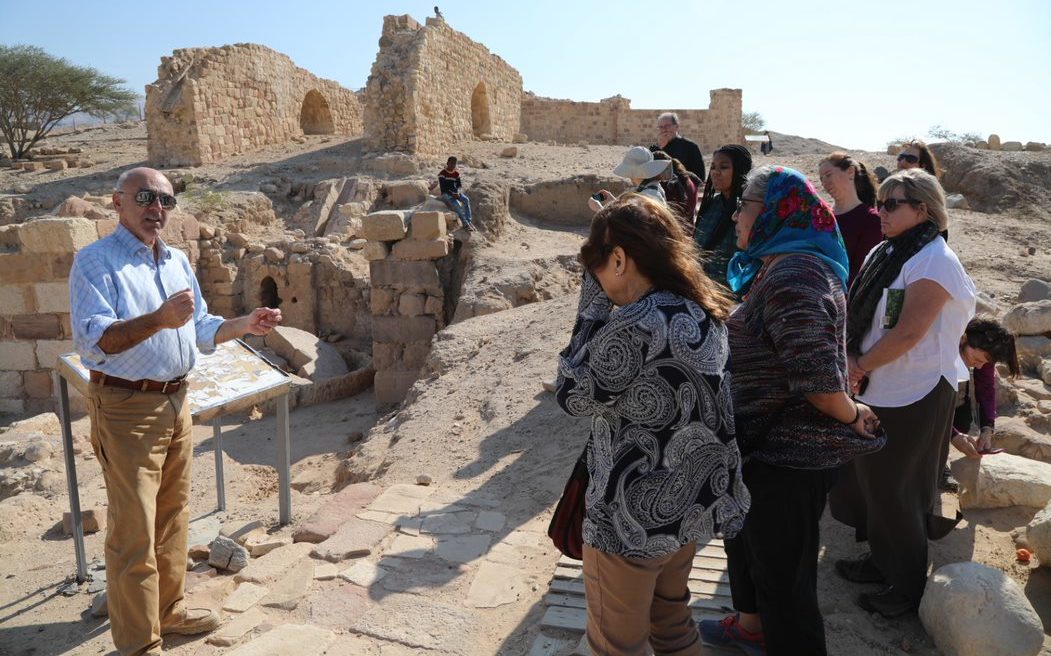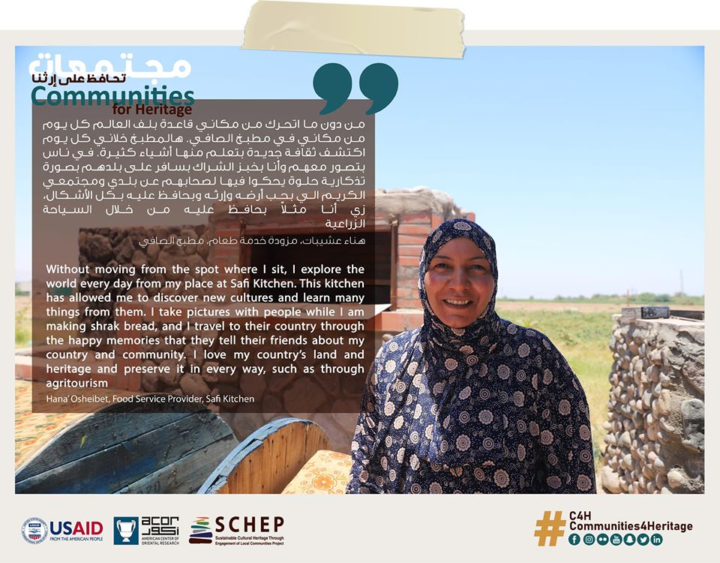
Since I traveled to Jordan for the first time, for the January 2020 ACOR-CAORC Faculty Development Seminar “Sustainability at the Margins,” life in the United States, in Jordan, and around the world has changed noticeably. The onset of the COVID-19 pandemic and massive worldwide protests against racism stemming from the Black Lives Matter movement have had palpable global impacts. Two months after my return to Southern California, my family and I were—like virtually everyone else—living under a series of rolling public health edicts, proclamations, quarantines, and urgent news updates. We would also find ourselves exposed to repeated televised incidents of violence and brutality targeting mostly people of African descent. The most extreme example to date was arguably the grisly videotaped death of Mr. George Floyd, in Minneapolis, Minnesota. After the murder of George Floyd, a series of protests exploded within the United States and in many cities across the globe. Coping with the combined effect of media portrayals of protests for racial justice and human rights in the U.S., together with the ongoing effect of COVID-19 worldwide, has proven to be an extremely jarring set of personal experiences.
It is in this context that I have taken the time to reflect on my time in Jordan as an African American who is fluent in Swahili and has lived, worked, and studied in various parts of the world, most especially Africa and the Middle East. Consider this essay a kind of alternate perspective on an issue of Black Lives: the diverse nature and experiences of people of African descent in one small area of the Middle East, the Ghawr region of the Jordan Valley in the Hashemite Kingdom of Jordan. This issue is complicated by notions of how Jordanians of African descent—the Ghawrani—choose to identify themselves (Curtis 2012)—which is not necessarily how an African American like me might choose to identify them.
Black Communities in the Middle East
It is probably fair to say the vast majority of Americans have no idea about the various African-descended communities currently living in the Middle East—how they got there and where they came from. Back in late 2019, when I was initially preparing to travel to Jordan for this Faculty Development Seminar, I certainly did not plan on finding a significant community of people of Black people where I would be heading. Once there, however, at the southern end of the Dead Sea, I found a small but enduring community of Afro-Jordanians.[1] They had been living in this region and working primarily as farmers for generations. This broader part of the Jordan Valley is called the Ghawr (an Arabic place name, with many English spellings), hence the name of its people, the Ghawrani. The specific city we visited was called Ghawr as Safi.
Ghawr as Safi, the town Dr. Pope and the CAORC group visited, is one of several similar communities situated towards the southern end of the Dead Sea in the Jordan valley.
Encountering these people in this place kind of blew my mind. Here I was, 7,500 miles from my home in California, literally about half-way around the planet, looking at a group of African-descended people living in the Jordan Valley. Some of the people’s faces reminded me of my own relatives in my mom’s agricultural hometown of Bakersfield, in California’s San Juaquin Valley.
This gave me a fresh perspective on the breadth and diversity of the global African diaspora community. African diaspora communities in the Middle East actually go back many, many centuries—to at least the 9th century CE, according to some historians (Hunwick and Powell 2009). I have also discovered that, in addition to Afro-Jordanians, there are Afro-Palestinians, Afro-Israelis, Afro-Saudis, Afro-Iraqis, Afro-Iranians, and so forth. Each of these communities has a unique history worth exploring, I now know.[2]
Exploring why we seldom see or hear about such people represented in the media is perhaps best left for another day. This can be a complex and touchy subject in some settings. I have also been told that many Ghawrani feel they are “Jordanians” plain and simple, albeit of a somewhat darker hue. Consequently, I will suffice to say these elements of Africana tucked away in various corners of the Arab region present an area of potentially fruitful modern social-science research. Finding information on these groups can be very challenging; yet the people themselves are there, in plain sight, for any and all who take the time to seek them out.
History, Economics, and Labor Migration
“Jordan’s geographical location as a crossroads between Africa and Asia and the long history of racial intermarriage in the Middle East have contributed to this Jordanian genetic mélange. Africans have been settling in the region since 6000 BCE…”
Edward E. Curtis IV, 2011. “The Ghawarna of Jordan: Race and Religion in the Jordan Valley,” in Journal of Islamic Law and Culture 13 (2–3):1–17.
Much of my own African-studies background was focused on the West African diaspora communities that came to populate the Americas. In that scenario, African prisoners of war were sold to European business concerns in a new and evolving form of slavery that would come to be known as “chattel slavery.” This was a type of enslavement wherein—contrary to more traditional forms of “temporary slavery”—one was made a slave for life, as were one’s children. The chattel slavery of the Americas ended up being a large-scale labor migration process that helped to fuel early capitalist expansion in the Americas. The concept of labor migration is fundamental, and it is important to bear it in mind in the case of Jordan.
In order to understand Jordan’s Southern Ghawr today, we have to look at history—and in order to do that, we have to look at the Crusades. One of the key economic motivations behind these religious wars of the 11th to 13th centuries was establishment of direct control over the highly lucrative sugar-production activities in the region, including the Jordan Valley. Those sugar-production facilities under control of western European economic interests would go on to serve as models for elsewhere in the Mediterranean and, later, as for plantations in the New World of the Americas (Jones 2016, 5).
The famous sugar plantations in the Caribbean region (a few of which I have visited, on the island of Barbados) have now been relatively heavily studied. The medieval sites in the Jordan Valley, however, that served as some of the earliest prototypes for those later plantations, have not. The ACOR-sponsored trip to the Tawahin es-Sukkar sugar-production facility at Ghawr as Safi was a unique opportunity to study some of the early managerial and technological roots of what would someday propel the European-led transatlantic slave trade. It afforded me a rare glimpse of global business and economic history as seen from one of its early templates, situated within one of its historical global hubs in the Middle East. This is an important history that needs further exploration and discussion (Jones 2016, 7).
Tawahin es-Sukkar means “the Sugar Mills” in Arabic. Sukkar is the Arabic word from which English and many other languages derive their words for “sugar.”
The growth and development of the global sugar industry is best viewed as a long-term evolutionary process, spanning vast stretches of both space and time. Its business models—like the sugar product they were designed to produce—were refined over time. And sometimes, in some places, as those models developed, the labor of people of African descent became critical. This may have included the southern Jordan Valley (Curtis 2011, 3).
The Jordan Valley Sugar Industry: A Brief History
The large-scale production of commercial sugar is a complex process requiring technical skills and expertise in a range of fields. Sugarcane must be planted, harvested, shredded, crushed, and pressed for juice, which is subsequently boiled and poured off so that the sugar crystals left behind can be collected (Taha 2015). It is important to put sugar making (and the human labor it requires) into historical context. The industry is, in part, a product of the 7th century collapse of the Eastern Roman (Byzantine) Empire in western Asia and its replacement by the Rashidun Caliphate. With the establishment of that new caliphate, or Islamic empire, came a new political, economic, and technological revolution.
The Jordan Valley had been a center of agricultural productivity since well before Roman times. The Islamic conquests of Byzantium’s eastern provinces in the 7th century would transform it into an even more lucrative zone of agribusiness. The nature of that revolution was not strictly in the domain of agriculture, either. The intensive features of sugar production also required entirely new procedures of business and legal administration. Richard Jones (2016, 15) gives credit to the Arabs for making possible the
diffusion of [sugarcane and other] new crops [that] depended on development of more elaborate and sophisticated irrigation techniques which required large investment of capital and a legal framework to govern the distribution of water. Landowners and labourers had to acquire new agricultural skills. Distribution and marketing of the products had to be established and the success of the market demanded a good measure of prosperity and stability.
Today, the ruins and other remnants of hundreds of medieval industrial sites where sugar was processed pepper the Jordan Valley. At the height of its industrial power, during the Ayyubid period (roughly from the 12th to the 15th centuries), many hundreds of workers connected to the sugar industry in some way may have lived in this area (Chandler 2012).
The specific site we visited at Tawahin es-Sukkar in Ghawr as Safi, was one of the best preserved in the region. And, for nearly a thousand years the agricultural community of Ghawr as Safi has included people of Black African ancestry. As Edward Curtis (2011, 3) has observed, most Jordanians today consider the story of the Ghawarna people to be “shrouded in mystery.” Much of their unique history is yet to be told.

Socio-Economic Issues in Ghawr as-Safi Today
Today the Ghawrani experience challenges of low employment, low income, and low education. To overcome these circumstances, they are developing their community through a set of economic initiatives focusing on micro- to small-size enterprises ( what people in the economic development field call simply “MSEs”). This includes leisure and tourism focusing on hotels, restaurants, ecotourism, general guided tours, agritourism, and culture- or community-based tourism (Jordan Southern Ghawr Co. n.d.).
The traditional economic mainstay of the Ghawr as Safi community has been in diversified agriculture, which today is economically stressed. While there I was told that this sometimes results in farmers going into debt to try to sustain their farms through periods of financial crisis. These farmers can lose their property when that debt load becomes unsustainable, and they may end up as tenant farmers on the very lands that they formerly owned (see also Curtis 2011, 8.)

I initially traveled to Jordan seeking to generate material on economic development from the late Roman period in Syria and Arabia, focusing on water resources. What I came away with is a burning desire to learn more about the Ghawrani people. There are still many unanswered questions that time and resources have not yet allowed me to explore. Where exactly in Africa did these people originally come from? What were their original ethnic and linguistic affiliations in Africa? Under what socioeconomic conditions did they arrive the Levant? When exactly did they arrive? What were the terms or conditions around their slavery—and their freedom? What is their millennium-long story?
If given the opportunity I would definitely return to Jordan and to Ghawr as Safi. I would like to bring my wife and daughter on that trip so that they can see what I have seen. I want them to meet a community that includes people who look like us deep in the heart of the Middle East. The energy and enthusiasm I found among the people in Safi was very energizing, upbeat, and encouraging.
On a very personal level, what I saw and felt there in Safi is hard to put into words. Maybe it was the familiarity of things there—such as the local Jordanian version of “soul food,” barbequed chicken and collard greens together with falafel and humus. The sense of connectivity between us was also not lost on our host, Mr. Abdaljawad Oshaibat (see video insert above). He mentioned to me that he too felt something simply by seeing me and other people in our group who looked like him.
As a result of my trip to Jordan, I now see and understand more about the wider world. Again, my trip to Ghawr as Safi was simply one stop among many in a region rich in cultural, political, and religious history. It afforded me the chance to pause and wonder at the depth and complexity of history in general, and, unexpectedly, at African diaspora history in particular. I hope to return to Jordan and to Safi one day after the shadow of the pandemic has lifted. Until then, I can take pleasure in knowing that, as a result of this trip to the Middle East, new horizons and new vistas have been opened up within me.
About the Author
Dr. Blaine Pope has worked most recently as a lecturer in business administration at California State University, Northridge, in Los Angeles, teaching business strategy and international business. In the past, he has also taught public administration, sociology, global studies, and environmental science and policy. Prior to university teaching, he worked in emergency relief and development projects in Africa and the Middle East. This was his first trip to Jordan, as a part of the January 2020 ACOR-CAORC Faculty Development Seminar “Jordan: Sustainability at the Margins. To read more about the Seminar overall, click here.
Editor’s Notes
[1] Edward E. Curtis IV conducted ethnographic research in the Ghawr in 2011, and, in his subsequent article, “The Ghawarna of Jordan: Race and Religion in the Jordan Valley,” he discussed the importance of situating social studies in a theoretical framework which accommodates for specific, local linguistic and historical contexts. He observed that: “the racial categories used by [external] researchers (Caucasian versus African) do not reflect the social identities constructed in Jordanian racial discourse itself” (2011, 6) and ”most Ghawarna do not have any sort of ‘black consciousness’” (2011, 9).
[2] For a recently recorded symposium of researchers in this field, please see “Blackness in the Middle East: A Virtual Panel,” from the University of Pennsylvania Middle East Center (co-sponsored by the Department of Africana Studies and Center for Africana Studies). The discussion featured Professor Eve Troutt Powell, Dr. Sheren Seikaly, Ezgi Çazmak, Razan Idris, and Kamal Suleiman, with Jane Abell moderating.
REFERENCES
Chandler, Graham. 2012. “Sugar, Please.” Aramco World 63 (4), July/August.
Hunwick, John, and Eve Powell. 2009. The African Diaspora in the Mediterranean Lands of Islam. Princeton: Markus Weiner Publishers.
Jones, Richard. 2016. Medieval Sugar Production in the Mediterranean Viewed from the 2002 Excavation at Tawaluin es-Sukkar, Safi, Jordan. Glasgow: Potingar Press.
Jordan Southern Ghawr Company. 2020. Visit Safi: Community Based Tourism. Amman: Printed with support from the USAID Sustainable Cultural Heritage Through Engagement of Local Communities Project.
Taha, Hamdan. 2015. “The Sugarcane Industry in Jericho, Jordan Valley.” In Konstantinos D. Politis (ed.), The Origins of the Sugar Industry and the Transmission of Ancient Greek and Medieval Arab Science and Technology from the Near East to Europe. Proceedings of the International Conference, Athens, 25, May, 2015, Athens, 51–79. Athens: National and Kapodistriako University of Athens.
SUGGESTED READINGS FROM THE EDITORS:
Curtis IV, Edward E. 2011. “The Ghawarna of Jordan: Race and Religion in the Jordan Valley.” Journal of Islamic Law and Culture 13 (2–3):1–17.
Gubara, Dahlia E. M. 2018. “Revisiting Race and Slavery through ‘Abd al-Rahman al-Jabarti’s ‘Aja’ib al-athar.” Comparative Studies of South Asia, Africa and the Middle East 38 (2): 230–245.
Middle East Studies Pedagogy Initiative. 2020. “Race in the Middle East and North Africa: Peer-Reviewed Articles 1979-2019.” Jadaliyya, 4 August 2020.
Rawashdeh, Saeb. 2018. “Scholar Explores Lives of Female Agricultural Labourers in Ghor Mazra.” The Jordan Times, 11 August 2018.